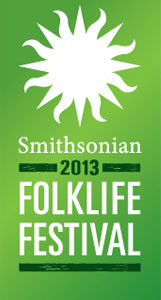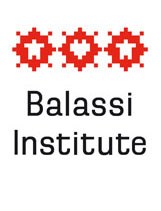Wednesday, June 26, 2013
Danubia Stage, 6 p.m. to 7 p.m.
Szalonna and His Band, featuring Andrea Navratil and Transylvanian Roma fiddlers
Enjoy different styles of folk music and song from the Carpathian Basin as performed by Szalonna and His Band, led by István Pál, who are renowned for their reinterpretations of folksongs; Andrea Navratil, who has received numerous honors for her achievements in education and folk music interpretation; and the celebrated Roma fiddlers, István “Dumnezeu” Jámbor, István “Kiscsipás” Varga, and Martin “Kodoba” Florin.
Danubia Stage, 7 p.m. to 8 p.m.
Centuries of Hungarian Dance
Bringing to life the customs and routines of the Hungarian village, this dance presentation demonstrates the regional and historical differences in traditions of dance, encompassing the area from the Csángó villages in Moldavia to the Rábaköz region in western Hungary, and from medieval circle dances to the modern csárdás.
Hungarian Dance Barn, 8 p.m. to 9:30 p.m.
Dance House featuring Tükrös and Heveder
Dancers of all skill levels are invited to this social dance party, which features a variety of regional Hungarian dance forms—all accompanied by folk bands from different cultural regions, from Romania to Hungary to North America.
Thursday, June 27, 2013
Danubia Stage, 6 p.m. to 7 p.m.
Eszter Bíró and Band
Eszter Bíró is a tremendously versatile singer who has performed as lead vocalist for the Budapest Klezmer Band and has produced an album of Jewish folk songs in eight different languages. She has also performed numerous musical roles on stage and film.
Danubia Stage, 7 p.m. to 8 p.m.
Village Dances
Providing a vignette of village life, this dance presentation evokes the atmosphere of a village fair in Hungary through various dances that would be performed at events throughout the day, from women’s circle dances to shepherds’ stick dances.
Hungarian Dance Barn, 8 p.m. to 9:30 p.m.
Dance House featuring Tükrös and Életfa
Dancers of all skill levels are invited to this social dance party, which features a variety of regional Hungarian dance forms—all accompanied by folk bands from different cultural regions, from Romania to Hungary to North America.
Friday, June 28, 2013
Danubia Stage, 7:30 p.m. to 8:30 p.m.
North American Dance Gala featuring Tükrös and Életfa
Folk dancers and musical bands from North America and Hungary join forces on stage in a presentation of Hungarian dance culture that demonstrates the unifying qualities of music and dance.
Hungarian Dance Barn, 8 p.m. to 9:30 p.m.
Dance House featuring Heveder
Dancers of all skill levels are invited to this social dance party, which features a variety of regional Hungarian dance forms—all accompanied by folk bands from different cultural regions, from Romania to Hungary to North America.
Saturday, June 29, 2013
Danubia Stage, 6 p.m. to 7 p.m.
Heveder and the Juhász Family
Enjoy different styles of music from the villages of Hungary and Transylvania, as interpreted by the Heveder Hungarian Folk Ensemble, who frequently play at festivals and folkdance events; and Zoltán, Réka, and Dénes Juhász, who are experts in the instrumental and vocal traditions of the Carpathian Basin.
Danubia Stage, 7 p.m. to 8 p.m.
Village Dances
Providing a vignette of village life, this dance presentation evokes the atmosphere of a village fair in Hungary through various dances that would be performed at events throughout the day, from women’s circle dances to shepherds’ stick dances.
Hungarian Dance Barn, 8 p.m. to 9:30 p.m.
Dance House featuring Heveder and Szalonna and His Band
Dancers of all skill levels are invited to this social dance party, which features a variety of regional Hungarian dance forms—all accompanied by folk bands from different cultural regions, from Romania to Hungary to North America.
Sunday, June 30, 2013
Danubia Stage, 6 p.m. to 7 p.m.
Peacock Gala Show
Featuring the finalists from the popular Hungarian television talent show, The Peacock Ascends, this gala presents performances by outstanding young dancers, musicians, and vocalists who represent “the best of the best” in Hungary’s folk music scene.
Danubia Stage, 7 p.m. to 8 p.m.
Centuries of Hungarian Dance
Bringing to life the customs and routines of the Hungarian village, this dance presentation demonstrates the regional and historical differences in traditions of dance, encompassing the area from the Csángó villages in Moldavia to the Rábaköz region in western Hungary, and from medieval circle dances to the modern csárdás.
Hungarian Dance Barn, 8 p.m. to 9:30 p.m.
Dance House featuring Heveder and Szalonna and His Band
Dancers of all skill levels are invited to this social dance party, which features a variety of regional Hungarian dance forms—all accompanied by folk bands from different cultural regions, from Romania to Hungary to North America.
Wednesday, July 3, 2013
Danubia Stage, 6 p.m. to 7 p.m.
Bob Cohen with Szalonna and His Band: Hungarian Jewish Melodies
Bob Cohen’s repertoire includes Hungarian, Romanian, Moldavian and Yiddish music, as well as traditional Hasidic tunes. He presents klezmer music as a living folk art—performing it in the style in which it was played in early-twentieth-century Eastern Europe
Danubia Stage, 7 p.m. to 8 p.m.
Village Dances
Providing a vignette of village life, this dance presentation evokes the atmosphere of a village fair in Hungary through various dances that would be performed at events throughout the day, from women’s circle dances to shepherds’ stick dances.
Hungarian Dance Barn, 8 p.m. to 9:30 p.m.
Dance House featuring Heveder, Gázsa, and the Juhász Family
Dancers of all skill levels are invited to this social dance party, which features a variety of regional Hungarian dance forms—all accompanied by folk bands from different cultural regions, from Romania to Hungary to North America.
Friday, July 5, 2013
Danubia Stage, 6 p.m. to 7 p.m.
Heveder, Gázsa, and the Juhász Family: Music from Transylvania
Enjoy different styles of music from the villages of Transylvania, as interpreted by the Heveder Hungarian Folk Ensemble, who frequently play at festivals and folkdance events throughout Transylvania; István Papp (known as “Gázsa”), who is one of the best-known dance house musicians in Hungary today; and Zoltán, Réka, and Dénes Juhász, who are experts in the instrumental and vocal traditions of the Carpathian Basin.
Danubia Stage, 7 p.m. to 8 p.m.
Centuries of Hungarian Dance
Bringing to life the customs and routines of the Hungarian village, this dance presentation demonstrates the regional and historical differences in traditions of dance, encompassing the area from the Csángó villages in Moldavia to the Rábaköz region in western Hungary, and from medieval circle dances to the modern csárdás.
Hungarian Dance Barn, 8 p.m. to 9:30 p.m.
Dance House featuring All Bands and a Lads’ Dance Contest
Dancers of all skill levels are invited to this social dance party, which features a variety of regional Hungarian dance forms—all accompanied by folk bands from different cultural regions, from Romania to Hungary to North America.
Saturday, July 6, 2013
Danubia Stage, 6 p.m. to 7 p.m.
Roma Music from Hungary and Transylvania
Renowned Roma musicians from Hungary and Transylvania present the multiethnic musical and dance traditions of various cultural regions in Central Europe, performing Hungarian, Romanian, Saxon, and Roma tunes.
Danubia Stage, 7 p.m. to 8 p.m.
Village Dance
Providing a vignette of village life, this dance presentation evokes the atmosphere of a village fair in Hungary through various dances that would be performed at events throughout the day, from women’s circle dances to shepherds’ stick dances.
Hungarian Dance Barn, 8 p.m. to 9:30 p.m.
Dance House featuring All Bands
Dancers of all skill levels are invited to this social dance party, which features a variety of regional Hungarian dance forms—all accompanied by folk bands from different cultural regions, from Romania to Hungary to North America.






